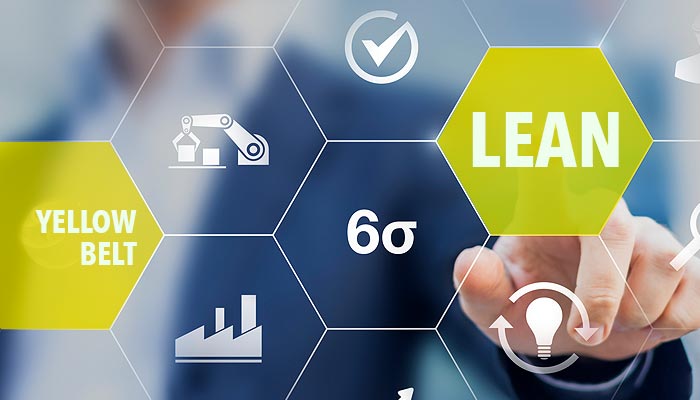EMPLOYEE SKILL TRAINING LLC
Lean Six Sigma
Lean Six Sigma
Couldn't load pickup availability
Imagine a realm where business processes are optimized, waste is minimized, and customer expectations are exceeded- this is the world of Lean Six Sigma. Lean Six Sigma is a process improvement methodology that merges the power of Lean and Six Sigma approaches. Lean process, which is based on the principle of continuous improvement, aims to eliminate waste while maximizing value for the customer. On the other hand, Six Sigma is a data-driven approach that focuses on reducing variation and defects in processes, using statistical analysis and problem-solving techniques. Together, Lean Six Sigma has revolutionized the ways organizations operate and succeed, and can be applied to any industry or business process. Our Lean Six Sigma course will provide participants with the fundamental principles of Lean Six Sigma, and how to apply them to business processes, reduce waste, and deliver measurable results. Participants will gain an understanding of the DMAIC and DMADV problem-solving approaches, and how to use common Lean Six Sigma tools and concepts, such as Value Stream Mapping and Kaizen, to facilitate process improvements. With the power of Lean Six Sigma, organizations can efficiently streamline their workflow and achieve operational excellence.
Course Outline:
Module One: Getting Started
• Icebreaker
• Housekeeping Items
• The Parking Lot
• Workshop Objectives
Module Two: Introduction to Lean Six Sigma
• What is Six Sigma?
• What is Lean?
• The History
• Elements of Lean Six Sigma
• Who Needs Lean Six Sigma?
• Practical Illustration
• Module Two: Review Questions
Module Three: Lean Six Sigma Principles
• Focus on the Customer
• Find the Root Cause
• Eliminate Waste to Create Flow
• Communicate With the Team
• Flexible and Responsive Environment
• Practical Illustration
• Module Three: Review Questions
Module Four: The Phases of Six Sigma (DMAIC)
• Define
• Measure
• Analyze
• Improve
• Control
• Practical Illustration
• Module Four: Review Questions
Module Five: The Phases of Six Sigma (DMADV)
• Define
• Measure
• Analyze
• Design
• Verify
• Practical Illustration
• Module Five: Review Questions
Module Six: Waste Management
• Muda, Muri, Mura
• The Wastes of Lean
• Value-Added vs. Non-Value-Added
• The Laws
• The Cost of Waste
• Practical Illustration
• Module Six: Review Questions
Module Seven: The Principles of Lean ManufacturingMuda, Muri, Mura
• Value
• Value Stream
• Flow
• Pull
• Perfection
• Practical Illustration
• Module Seven: Review Questions
Module Eight: Project Selection and ManagementValue
• Selecting and Scoping Projects
• Project Management
• Kaizen
• Change Management
• Leadership Skills
• Practical Illustration
• Module Eight: Review Questions
Module Nine: Lean Six Sigma Techniques
• Brainstorming
• The S System
• Benchmarking
• Poka-yoke
• Gemba Walk
• Practical Illustration
• Module Nine: Review Questions
Module Ten: Tools to Drive ChangeBrainstorming
• Value Stream Mapping
• Pareto Chart
• Cause-and-Effect Analysis
• The Whys
• Histogram
• Practical Illustration
• Module Ten: Review Questions
Module Eleven: Business Advantages
• Error Reduction
• Increased Revenue
• Reduced Costs
• Customer Loyalty
• Employee and Team Development
• Practical Illustration
• Module Eleven: Review Questions
Module Twelve: Wrapping Up
• Words from the Wise
• Review of Parking Lot
• Lessons Learned
• Completion of Action Plans and Evaluations
Share



